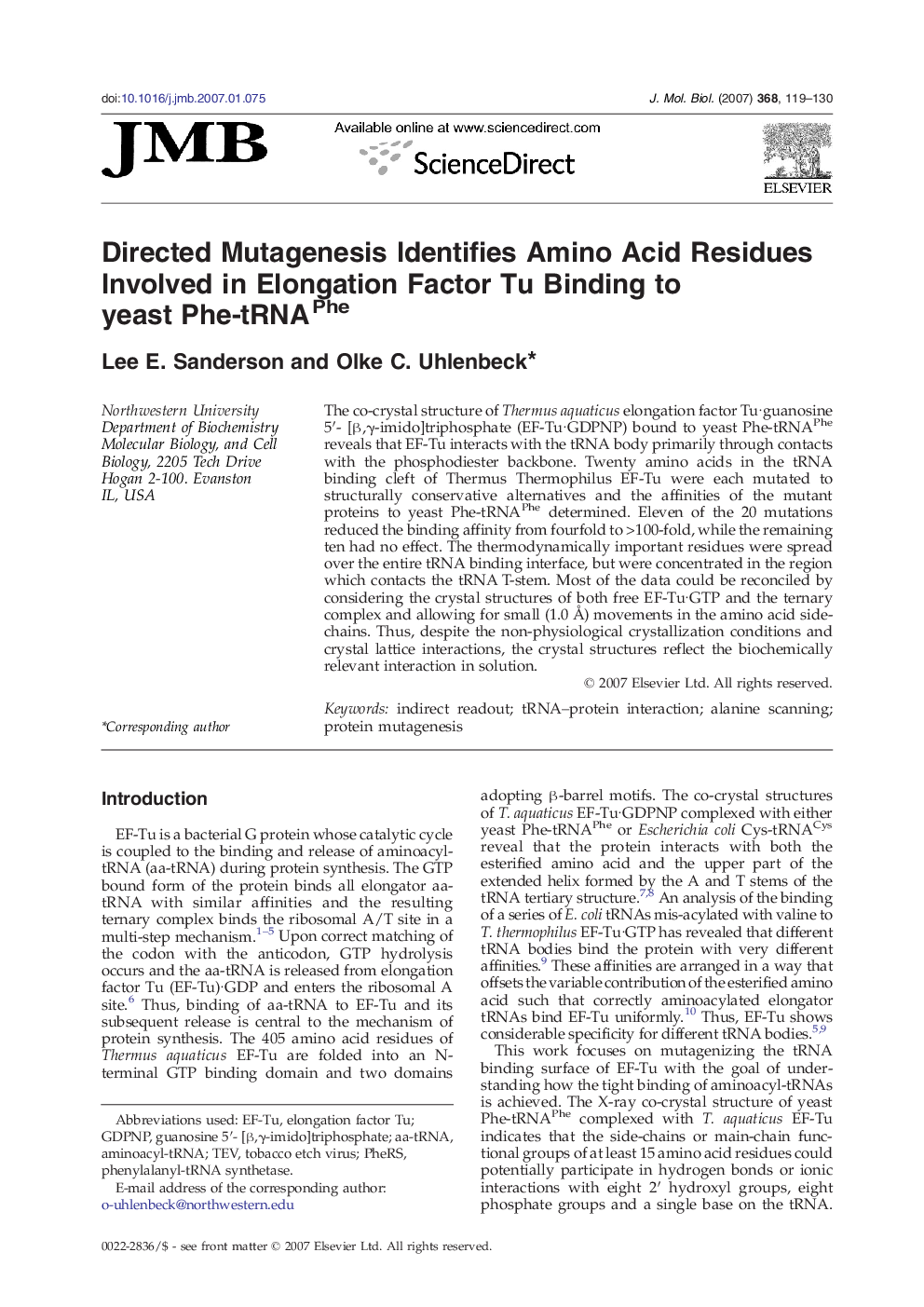| Article ID | Journal | Published Year | Pages | File Type |
|---|---|---|---|---|
| 2188526 | Journal of Molecular Biology | 2007 | 12 Pages |
The co-crystal structure of Thermus aquaticus elongation factor Tu·guanosine 5′- [β,γ-imido]triphosphate (EF-Tu·GDPNP) bound to yeast Phe-tRNAPhe reveals that EF-Tu interacts with the tRNA body primarily through contacts with the phosphodiester backbone. Twenty amino acids in the tRNA binding cleft of Thermus Thermophilus EF-Tu were each mutated to structurally conservative alternatives and the affinities of the mutant proteins to yeast Phe-tRNAPhe determined. Eleven of the 20 mutations reduced the binding affinity from fourfold to >100-fold, while the remaining ten had no effect. The thermodynamically important residues were spread over the entire tRNA binding interface, but were concentrated in the region which contacts the tRNA T-stem. Most of the data could be reconciled by considering the crystal structures of both free EF-Tu·GTP and the ternary complex and allowing for small (1.0 Å) movements in the amino acid side-chains. Thus, despite the non-physiological crystallization conditions and crystal lattice interactions, the crystal structures reflect the biochemically relevant interaction in solution.
